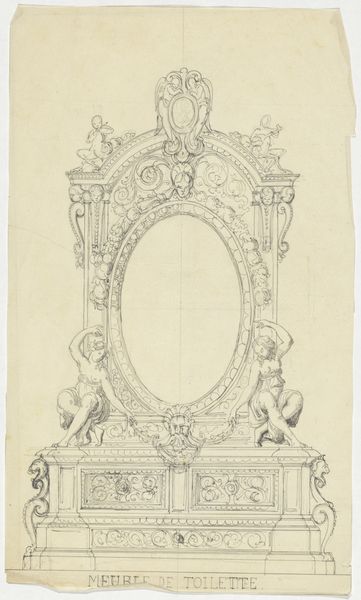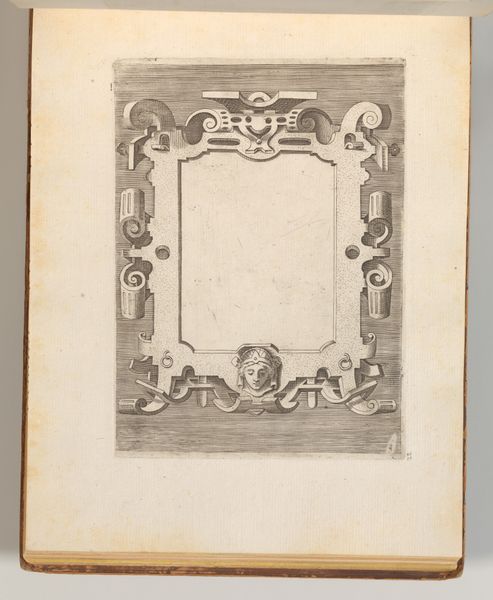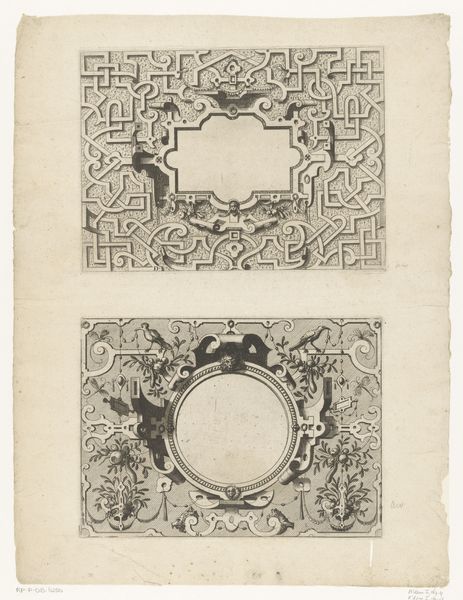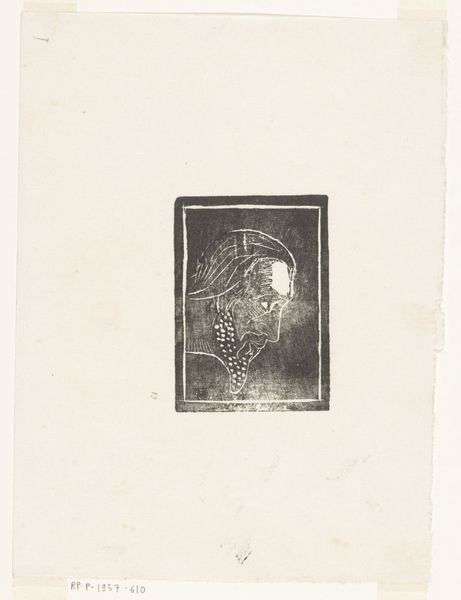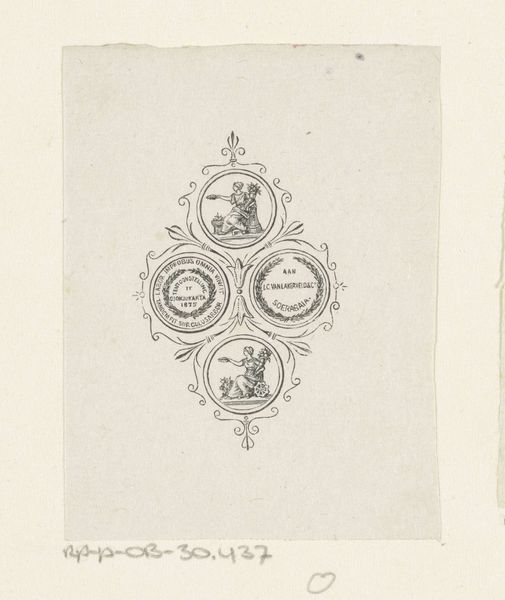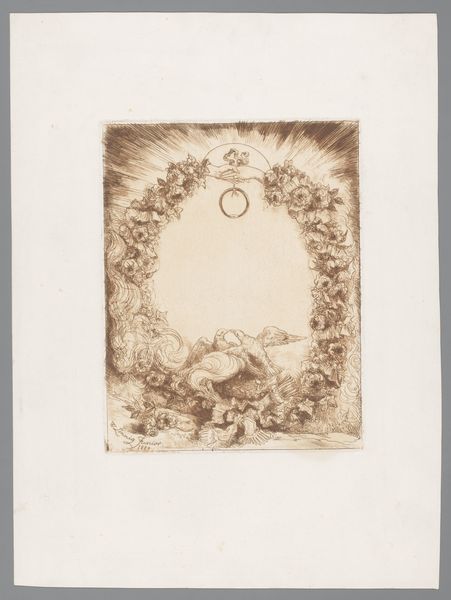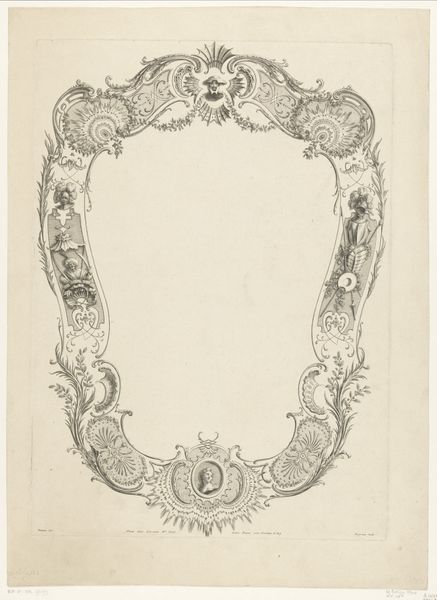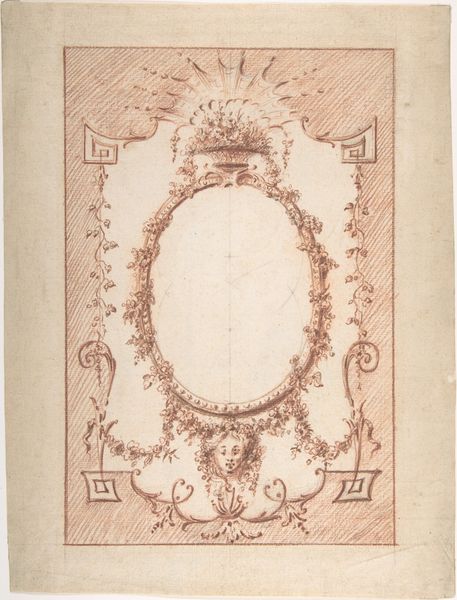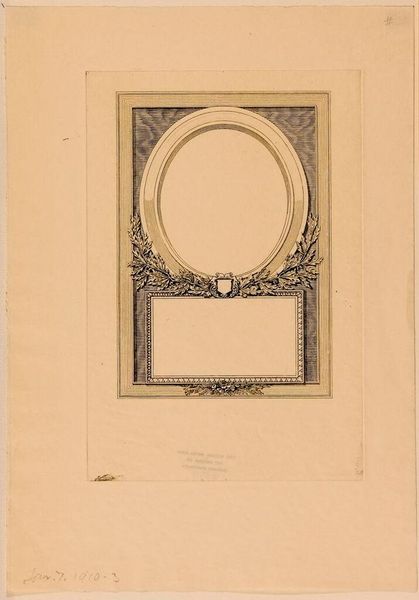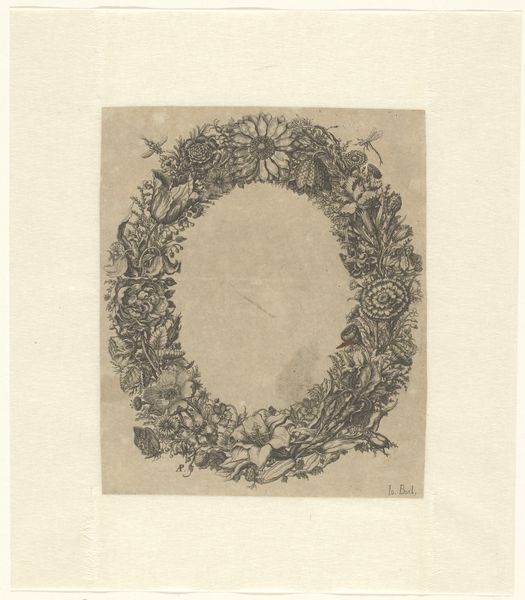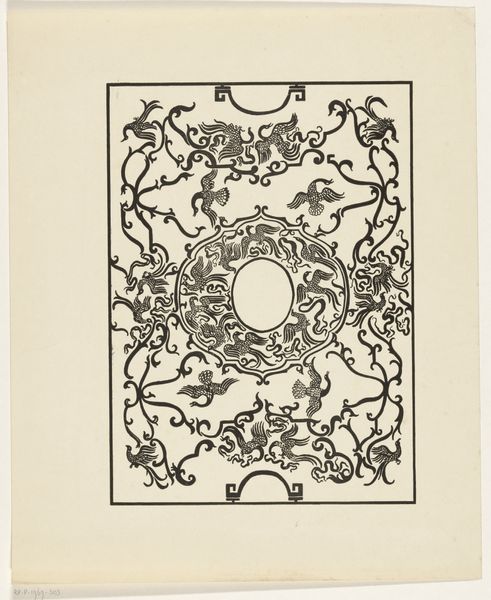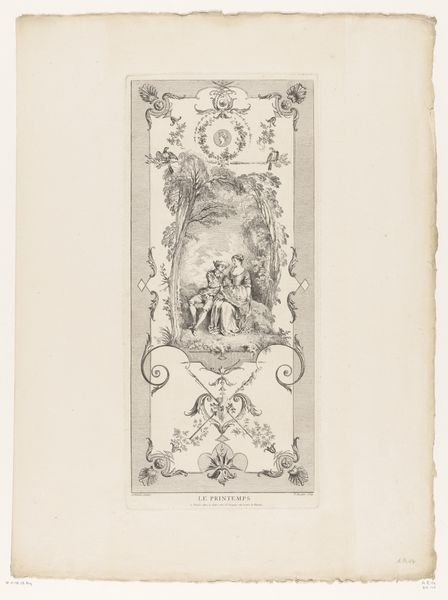
Dimensions: height 135 mm, width 90 mm
Copyright: Rijks Museum: Open Domain
Editor: Here we have Frans Van Kuyck's "Ornament Cartouche met Putti," created sometime between 1862 and 1911, using engraving and ink. It's delicate and incredibly detailed! The more I look, the more the Baroque-era influences stand out. What do you see in this piece? Curator: Well, first off, I am drawn in by the playful combination of cherubic putti and these more solemn, almost comically serious faces peeking out! They give it an unexpectedly human quality. It reminds me a bit of the elaborate flourishes you'd see on old maps – did you notice how the blank space is so prominent? Editor: The blank space? You mean, the circle and the empty cartouche? Curator: Precisely. Imagine the possibilities. A coat of arms? An inscription? This wasn't just decoration; it was an invitation for something more, don’t you think? These putti were practically holding the stage open for some grand pronouncement! Almost like a visual fanfare waiting for content! Editor: That's a fascinating perspective! I was so focused on the artistic details. It’s interesting to think that the piece is incomplete by design. Do you think its function as a template is what dictates its artistic quality? Curator: Perhaps it blurs the lines, doesn’t it? Is it pure art, or applied art? But maybe that is precisely the point. To be useful *is* its artistic statement. Or it could be both! What did you notice while considering the artwork today? Editor: It shifted my idea of what a finished artwork can be. The idea of art being functional is always cool to think about. Curator: Absolutely, it reminds us art doesn't always have to shout. Sometimes, the quiet invitation is the loudest statement of all.
Comments
No comments
Be the first to comment and join the conversation on the ultimate creative platform.
